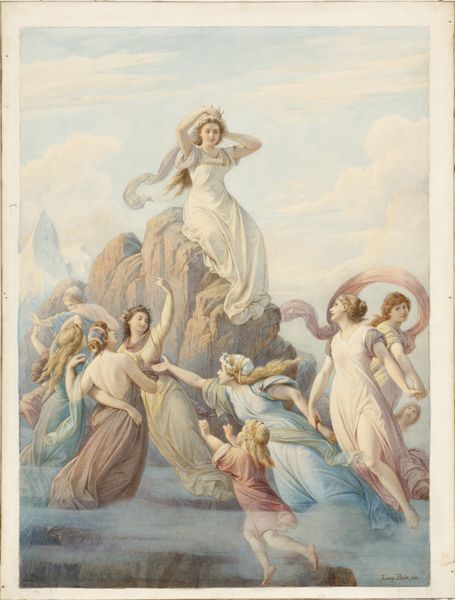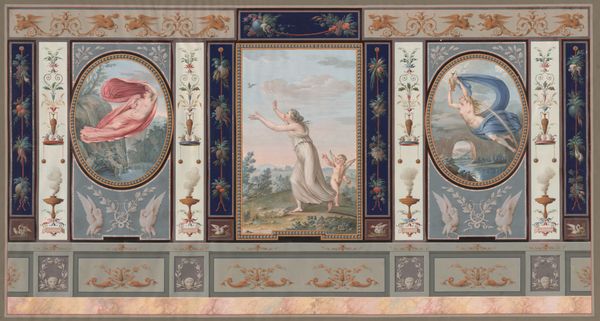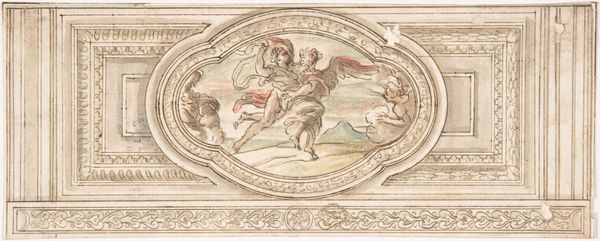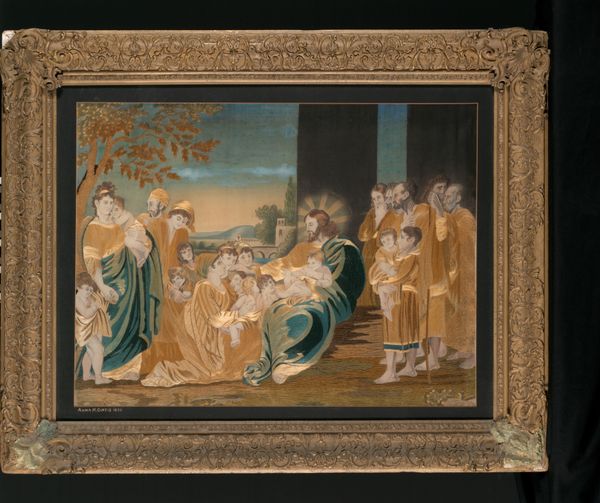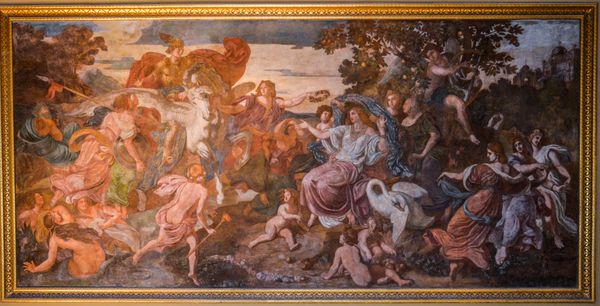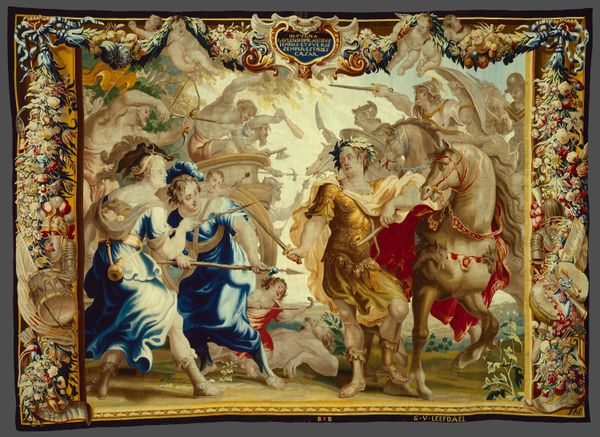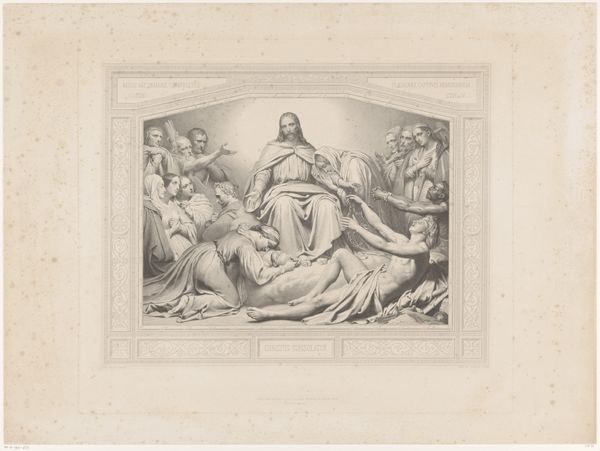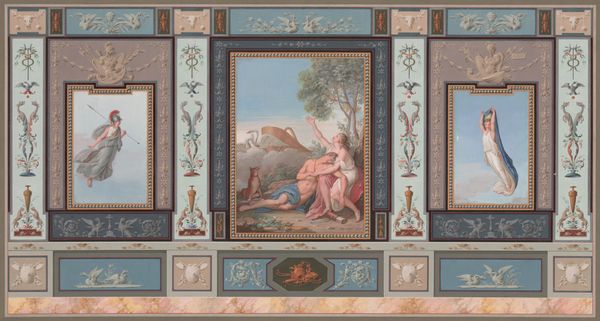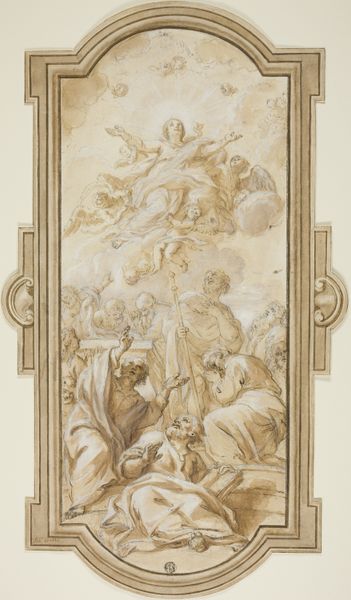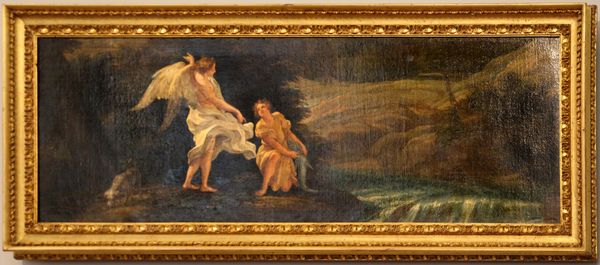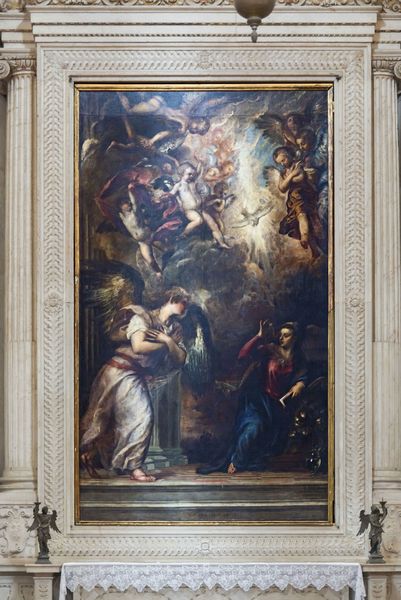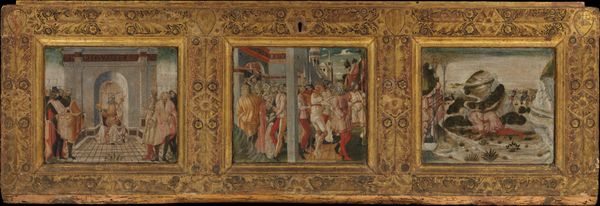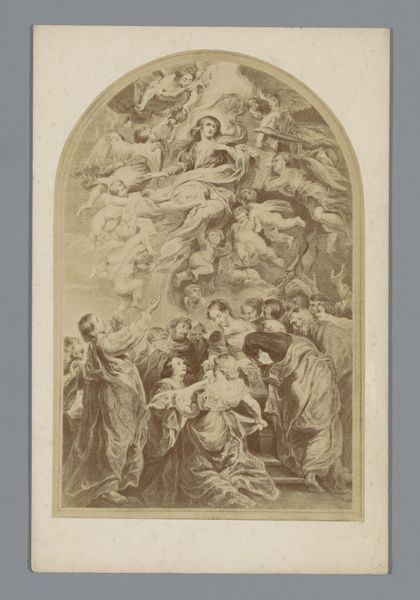
Copyright: Städelsches Kunstinstitut
Leopold von Bode created this watercolor triptych illustrating Schiller's "Berglied." The central panel teems with nymphs surrounding a radiant, central female figure. They represent a return to classical motifs, echoing the nymphs seen in Renaissance paintings. The nymphs, with their flowing garments and outstretched arms, evoke a sense of collective longing and connection. We see this gesture repeated in other artworks across time, like Botticelli’s "Primavera," where figures reach out in dance. The nymph has evolved from ancient Greek mythology as a guardian of nature to a representation of feminine beauty and grace. In the psychoanalytic sense, these figures tap into a collective memory of an idealized past, a subconscious yearning for harmony and natural beauty. This yearning is a powerful force, engaging viewers on a deep, subconscious level. These symbols resurface, evolve, and take on new meanings, creating a cyclical progression through art history.
Comments
No comments
Be the first to comment and join the conversation on the ultimate creative platform.
